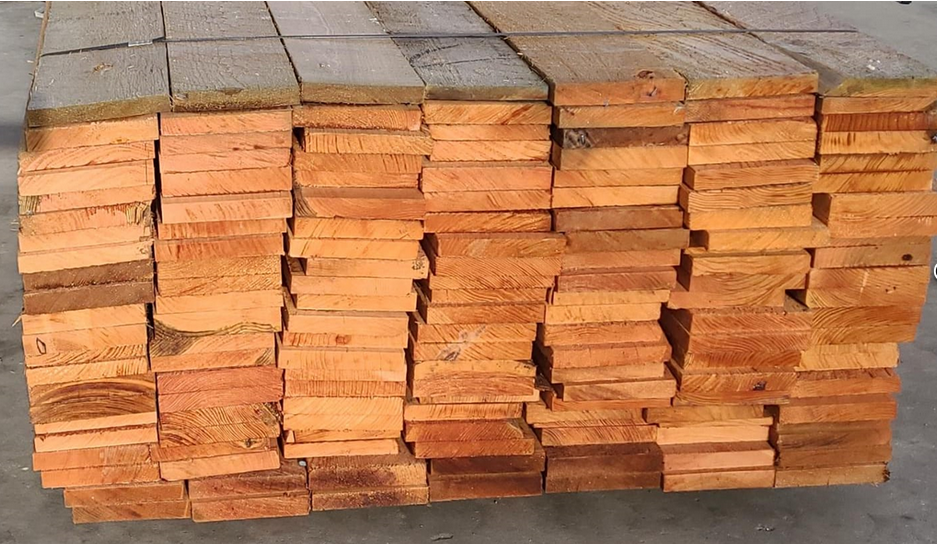To make the best log homes ever, we need to use the best wood in the world: Western Red Cedar. It’s top-notch wood when it comes to how pretty it looks, how good it is, and how long it lasts. But you don’t have to just believe us, let’s check out the facts. Explore the beauty & durability of Western Red Cedar for log homes & outdoor projects. Learn why it’s the top choice for timeless & eco-friendly spaces.
Table of Contents
- Outperforms the Competition
- Incredibly Durable
- Lasts a Lifetime
- Makes an Impact
- Grows Close to Home
- Misconceptions about Western Red Cedar
- FAQs
- What are the advantages of using Western Red Cedar for outdoor projects?
- How does Western Red Cedar compare to other types of wood in terms of durability and weather resistance?
- Is Western Red Cedar suitable for use in humid climates?
- What are some common applications for Western Red Cedar in construction and woodworking?
- How does the sustainability of Western Red Cedar harvesting compare to other wood species?
Outperforms the Competition
Western Red Cedar is the top-notch insulator among woods. It keeps things warm or cool better than other types of wood or alternative building stuff. It’s got this thing called an R-value of 1.5 for every inch, which means it’s super good at keeping heat in or out. That’s why Pioneer Log Homes, which are made with Western Red Cedar, are nice and chill in the summer and don’t need as much heat in the winter. Plus, this wood is tough as nails, even when the weather gets rough.
Incredibly Durable
Western Red Cedar is good at dimensional stability when it gets hot or cold. It’s also better than other types of trees like pine at warping and twisting.
Lasts a Lifetime
Western Red Cedar doesn’t get rotten as other types of wood do. So, a product can last for a long time – like, for many, many generations. People who have lived in the Pacific Northwest for a long time have respected this wood for hundreds of years because it doesn’t easily rot and bugs don’t like it much either. Cedar forests have become a symbol of being strong and important, and they’re also places where people can go to think and be calm.
Makes an Impact
The special color and appearance of Red Western Cedar also help Pioneer Log Homes of BC make something really special. It’s got a reddish-brown color, straight lines, hardly any knots, a nice smell, and loads of character. When you use Western Red Cedar, it makes everything feel super cozy.
Grows Close to Home
Western Red Cedar comes from places like British Columbia and the Pacific Northwest. The wood we use for our special log homes comes from the forests in central British Columbia, Canada. Pioneer teams carefully gather and pick out the timber. This wood is light, so it’s simple to move around. These things together help us keep our business eco-friendly and sustainable.
There’s no doubt that when it comes to making fancy log homes, Western Red Cedar is the best pick. Whether you care about how well it works, looks, or impacts the environment, Western Red Cedar is the top choice.
Misconceptions about Western Red Cedar
Here are some potential misconceptions about Western Red Cedar
- Vulnerability to decay: While Western Red Cedar is highly resistant to decay compared to many other wood species, some people may still believe that all wood is prone to rot over time. Addressing this misconception by highlighting the natural preservatives present in Western Red Cedar and its exceptional durability can help reassure readers of its longevity.
- Limited availability: Some individuals might assume that Western Red Cedar is scarce or difficult to obtain, especially if they are not familiar with its regional availability. Emphasize the sustainable harvesting practices in regions like British Columbia and the Pacific Northwest, where Western Red Cedar is abundant, to dispel this misconception.
- High maintenance: There may be a perception that using wood for outdoor projects requires extensive maintenance to prevent deterioration. Highlight the low-maintenance nature of Western Red Cedar, which requires minimal upkeep due to its natural resistance to rot, decay, and insect damage.
- Environmental impact: Despite being a natural resource, there could be concerns about the environmental impact of harvesting Western Red Cedar. Counter this misconception by explaining sustainable forestry practices, such as replanting and responsible harvesting, that ensure the long-term health of cedar forests and minimize ecological disruption.
- Costliness: Some people may assume that the superior qualities of Western Red Cedar come with a high price tag, making it inaccessible for certain projects or budgets. Discuss the cost-effectiveness of Western Red Cedar over the long term, considering its durability and minimal maintenance requirements, to illustrate its value proposition.

FAQs
What are the advantages of using Western Red Cedar for outdoor projects?
Western Red Cedar is prized for its natural beauty, dimensional stability, and resistance to decay and insect damage. Its distinct reddish-brown color adds warmth and character to any outdoor space. Additionally, its low density makes it lightweight and easy to work with, while still providing excellent strength and durability.
How does Western Red Cedar compare to other types of wood in terms of durability and weather resistance?
Western Red Cedar outperforms many other wood species in terms of durability and weather resistance, especially in outdoor applications. Its natural oils act as a preservative, protecting it from rot, decay, and insect infestation without the need for chemical treatment. Western Red Cedar typically lasts longer and requires less maintenance than other commonly used outdoor woods like pine or spruce.
Is Western Red Cedar suitable for use in humid climates?
Western Red Cedar is highly suitable for humid climates due to its natural resistance to moisture-related issues such as rot and mold. Its low moisture content and ability to resist warping and splitting make it an ideal choice for outdoor projects in areas with high humidity levels.
What are some common applications for Western Red Cedar in construction and woodworking?
Western Red Cedar is widely used in various construction and woodworking projects, including outdoor furniture, decking, siding, fencing, and trim. Its versatility, workability, and aesthetic appeal make it a popular choice for both residential and commercial applications.
How does the sustainability of Western Red Cedar harvesting compare to other wood species?
Western Red Cedar is considered a sustainable choice for wood products. It is typically harvested from responsibly managed forests where new trees are continuously planted to replace those that are harvested. Additionally, the long lifespan of Western Red Cedar products reduces the need for frequent replacements, further contributing to its environmental sustainability.
